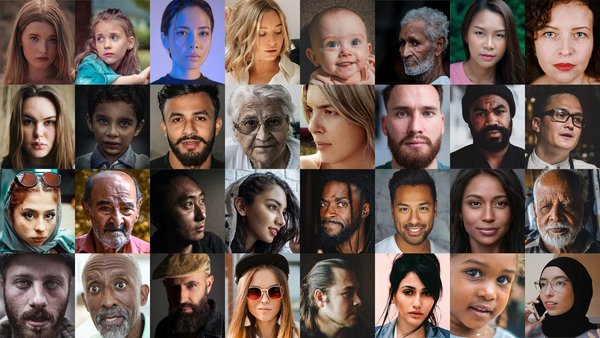Hub and spoke creative agencies: why this time it’s different /
Dan Salkey, the co-founder and strategy partner at Small World, on why after decades of false dawns, now really is the time for agencies built on independent talent

Hub and spoke. Decentralised. Freelance. Call it what you want, the creative agency structure that chooses to build teams from a pool of independent talent rather than full-time employees to fulfil briefs has frequently been lauded as the future of advertising but never quite reached its promise — the Dele Alli of business models if you will.
There are some success stories, though. Host (acquired by Havas) was an early winner, Been There Done That offers an interesting consultancy proposition, and MASH in APAC is a contemporary that’s doing well, which I consider a bright sign as Asia appears to be one step ahead of us all at every turn.
I run a company called °Small World. We curate super-teams for brands from a heavily vetted roster of independent talent organised by a team of senior partners. I won’t bang on about the virtues of running a service business like this; if you want the creds, DM me.
Instead, lend me 3.8 minutes of your time (which is how long the internet assures me it takes to read 500 words) to explain why the time is right for businesses that emphasise freedom.
Independent talent takeover /
Much has been written about the gig economy — a lot of it focused on the precarious terms offered to Uber drivers and outsourced graphic designers, which has created a perception problem that causes agencies to cut their own noses off to spite their faces, in thinking that freelance talent is somehow lesser. The reality is that by 2027, over half of the professional workforce will freelance in some capacity, and when you look at younger cohorts that reality is already here — 48% of millennials already freelance in some way.
COVID accelerated this trend but, realistically, it’s just the state of work in the modern world. The idea of a job for life is gone, and people are treating employment in a more transactional way — just as some employers have treated their staff for decades.
Hybrid is here to stay /
The pandemic instigated the biggest unplanned experiment since the babies of Woodstock were born in 1970, in terms of the shift to remote work, which then gave way to hybrid work. I think we all agree that being fully remote isn’t good for anyone. Taking human emotion out of it, fully remote work is thought to be 10% less productive than hybrid or office work. We certainly don’t run our business that way. However, hybrid work is more efficient and effective than office-mandated employment. Not only are employees more effective working in this way, it unlocks the ability to work across borders with talent not tied to time zones. The most progressive brands get that, and therefore they get businesses like ours.
A final note for any old-school operators still thinking about chaining everyone to their desks; a recent study analysed a sample of the S&P 500 to see if office mandates had any impact on quarterly results and stock price. Spoiler alert — it didn’t. There was absolutely no improvement in performance compared to those that did. Hybrid is the new normal, and everybody should be taking advantage of that.
The new creative class /
It feels like the agency world is in a never-ending talent crisis; it’s the Eastenders omnibus of crises that has plastered [advertising trade mag] Campaign’s front pages since the late 90s. But with in-housing on the rise, talent going independent and aspiring entrants struggling to find a way in, it’s safe to say it’s never been worse.
Never been worse for traditional models, that is. Flexible models can be moulded to fit with clients’ in-house teams, and they are built on independent talent. The biggest opportunity, though, is how these flexible models can bring new talent into the fold. The fact that up-and-coming talent aren’t finding their way into traditional marketing and advertising agencies doesn’t mean that there isn’t a pool of young people who want to be creative.
43% of young adults still want to be in the creative industries, but the path to monetising creativity has been flipped on its head. The rise of social media and the tools that came with these platforms have democratised creativity. That’s why 57% of Gen Z-ers want to be a content creator, a role often mislabeled as an influencer by boomer experts still trying to keep up with the Kardashians.
There are three reasons why content creative is such a sought-after job — it’s lucrative, it’s flexible and it’s fun. All things that °Small World and Co. offers in spades. Clearly, to pull in the new creative class, business as usual won’t quite cut it.
To recap... /
Current talent is going independent en masse. Smart businesses have recognised hybrid work as a massive unlock. New talent isn’t entering the creative industry in the traditional sense.
This is a perfect storm for liquid models or, in other words, models that can attract the very best talent both in and entering the industry, and organise them in a way that the very best clients are open to.
Models like this are ever more pertinent in an era where the vast majority of agencies are struggling to grow due to a broadening talent crisis, a failure to evolve time-based remuneration models and in-house offerings that get better by the day.
Anyway, Isn’t an agency just a group of people organised to do great work? Why is it so bizarre that we might organise said people in a wholly more equitable and freeing way for talent and brands?
The future is freedom.
Want more of the same? /
We don’t just write about best-in-class campaigns, interviews and trends. Our Members also receive access to briefings, online training, webinars, live events and much more.








